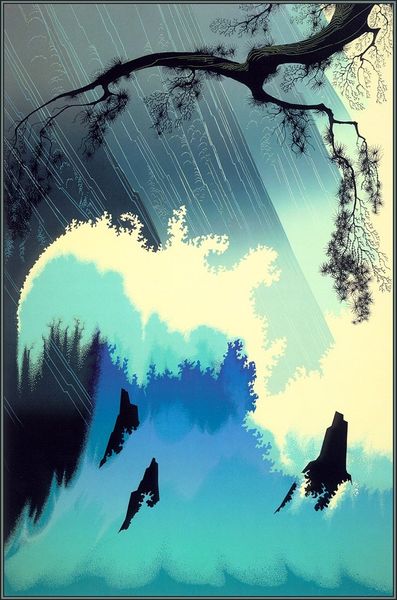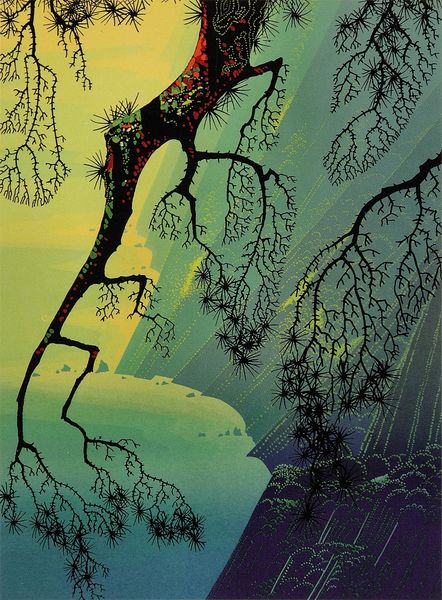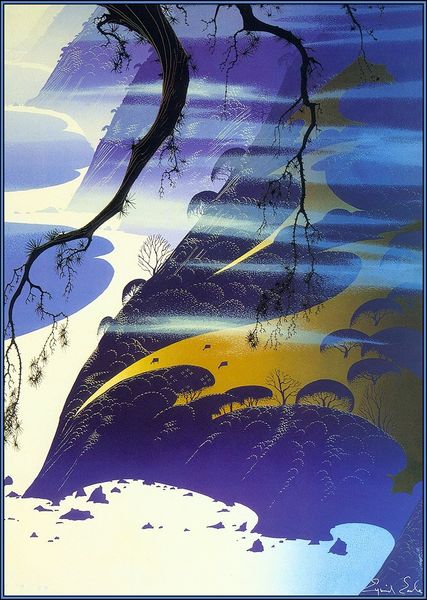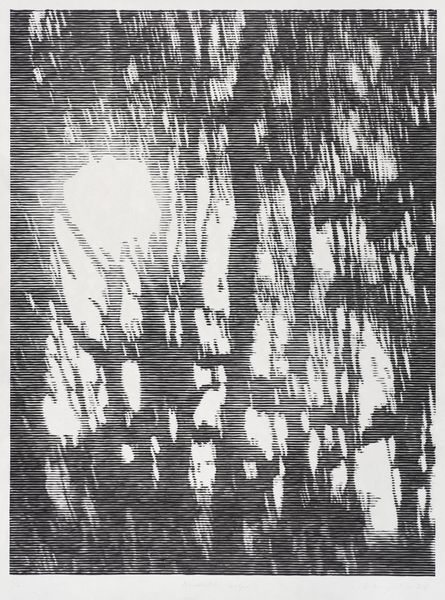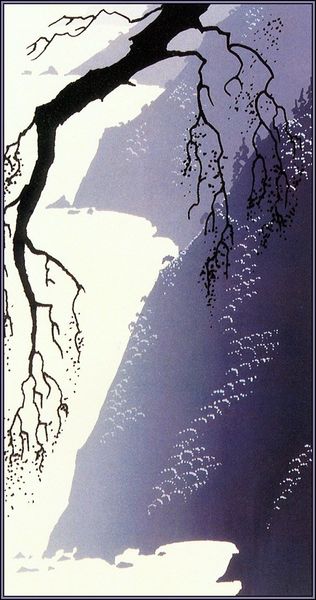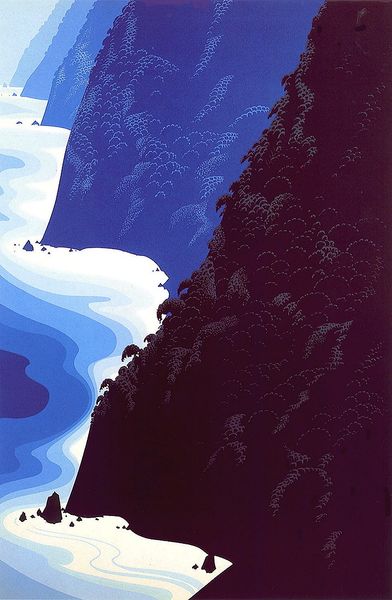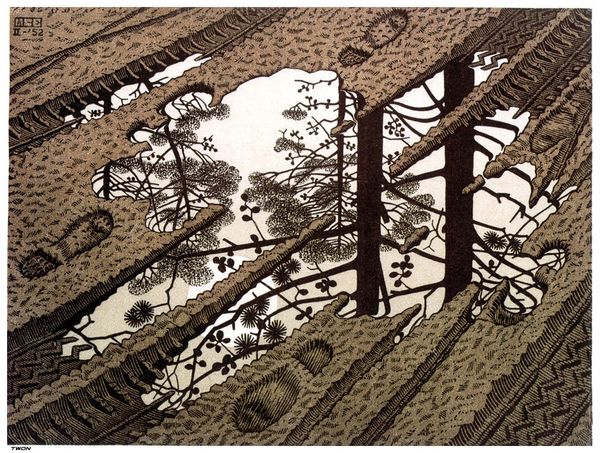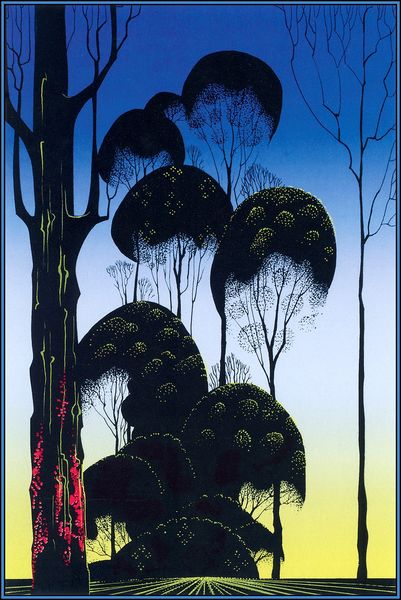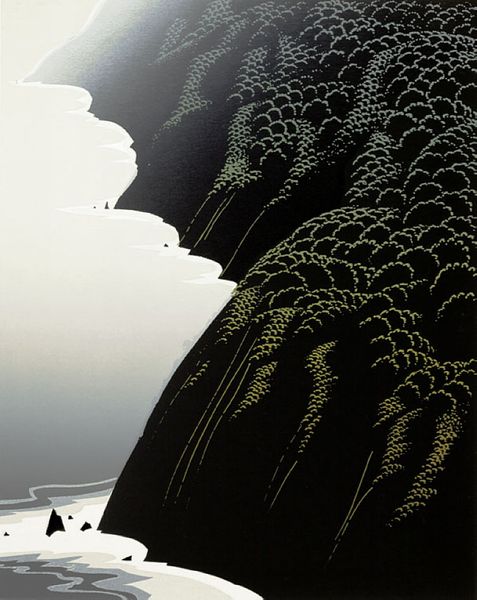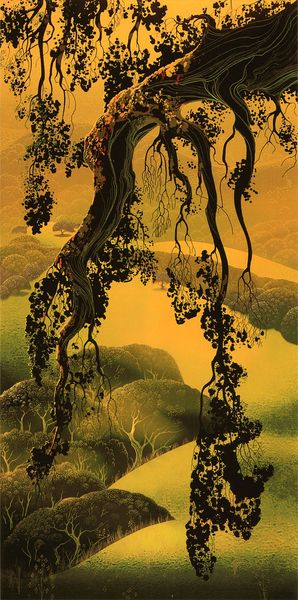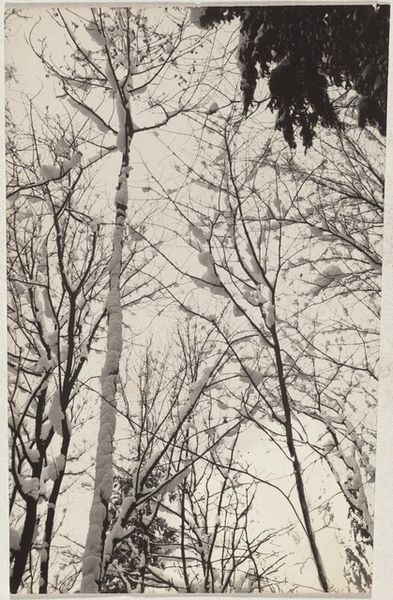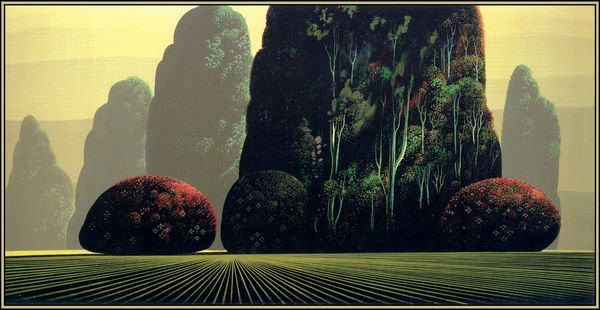
Copyright: Eyvind Earle,Fair Use
Curator: It is my pleasure to introduce "Snow White" by Eyvind Earle, a 1992 painting that exemplifies his striking linearity and use of light. Editor: Stark and beautifully composed. The trees reach up with a certain threatening elegance, almost like skeletal fingers against the pale sky. There’s a definite feeling of unease here, despite the title's connotation of fairy-tale charm. Curator: The architectural precision Earle employs is certainly central to its affect. Observe how he's structured the forest; it isn’t a naturalistic rendering but a constructed one, almost graphic in its clear lines. The verticality dominates the composition, segmented by beams of filtered light. Editor: And consider those beams of light—not just divine interventions slicing through the dark canopy, but carefully laid strata. It suggests deliberate process, the control inherent to labor itself—every ray placed just so. One must consider the industrial aspect—were such paints easily acquired in abundance? How accessible were these technologies and their impact on such a widespread production of artworks? Curator: An interesting point. Yet, notice how the very starkness, this manipulation of line and form, creates depth, illusion— a perspectival tension that elevates the ordinary into something monumental, otherworldly. Is it not in that artistic license where its genius lies? Editor: Genius, perhaps. But the 'otherworldly' arises directly from Earle's manipulation of matter. Without those material beams of light, industrially sourced pigments painstakingly applied, all that careful construction would exist only as an idea. We should remember the labor invested here to truly unpack this image. Curator: It seems we approach from divergent pathways. Ultimately, its value, whether perceived or materially-constructed, lies in its continuing capacity to provoke thoughtful reaction such as these. Editor: Indeed. The forest speaks differently depending on which lens we bring. A testament perhaps to the power, or, conversely, the mutability of art itself.
Comments
No comments
Be the first to comment and join the conversation on the ultimate creative platform.
